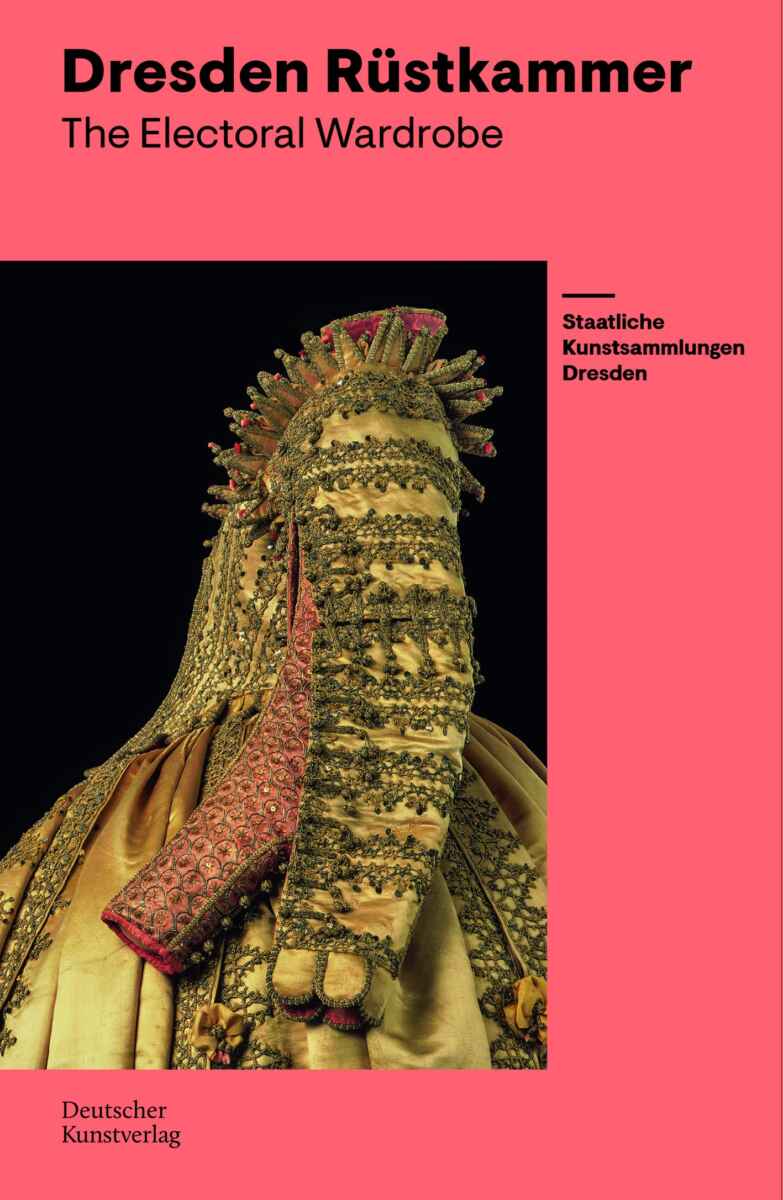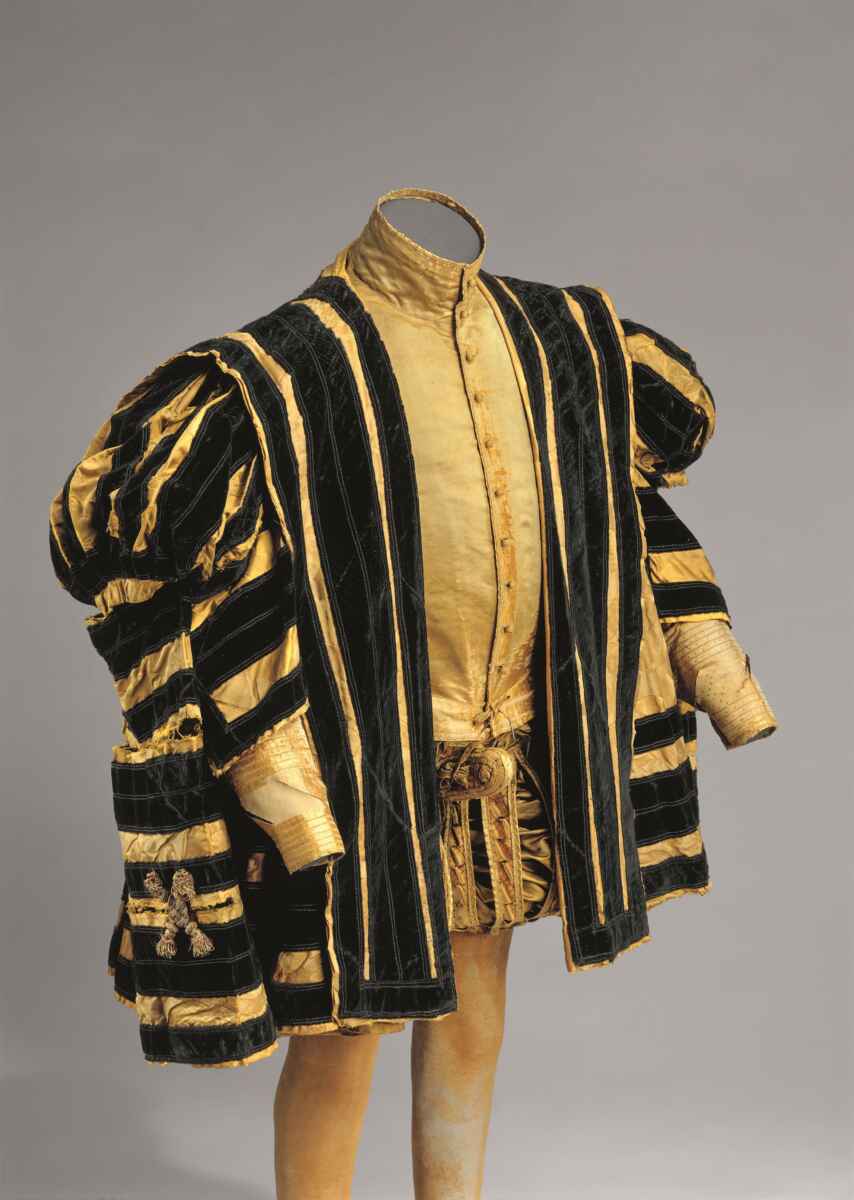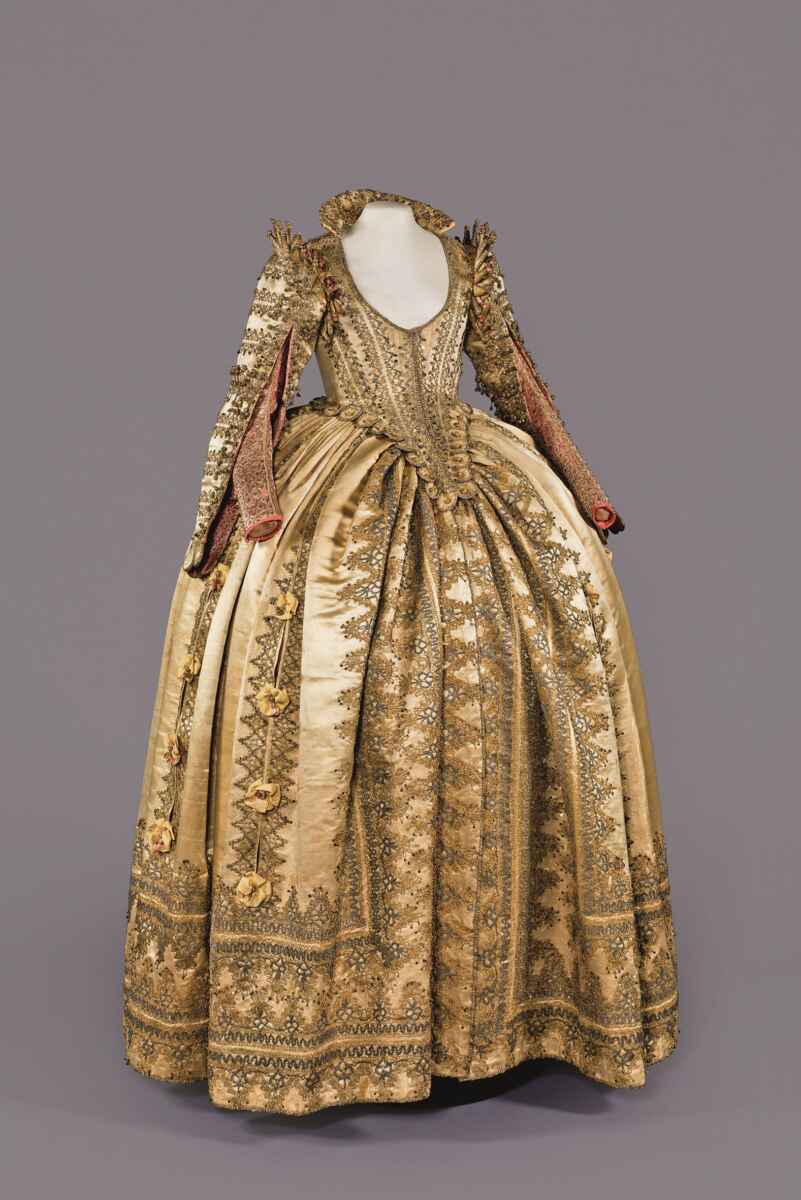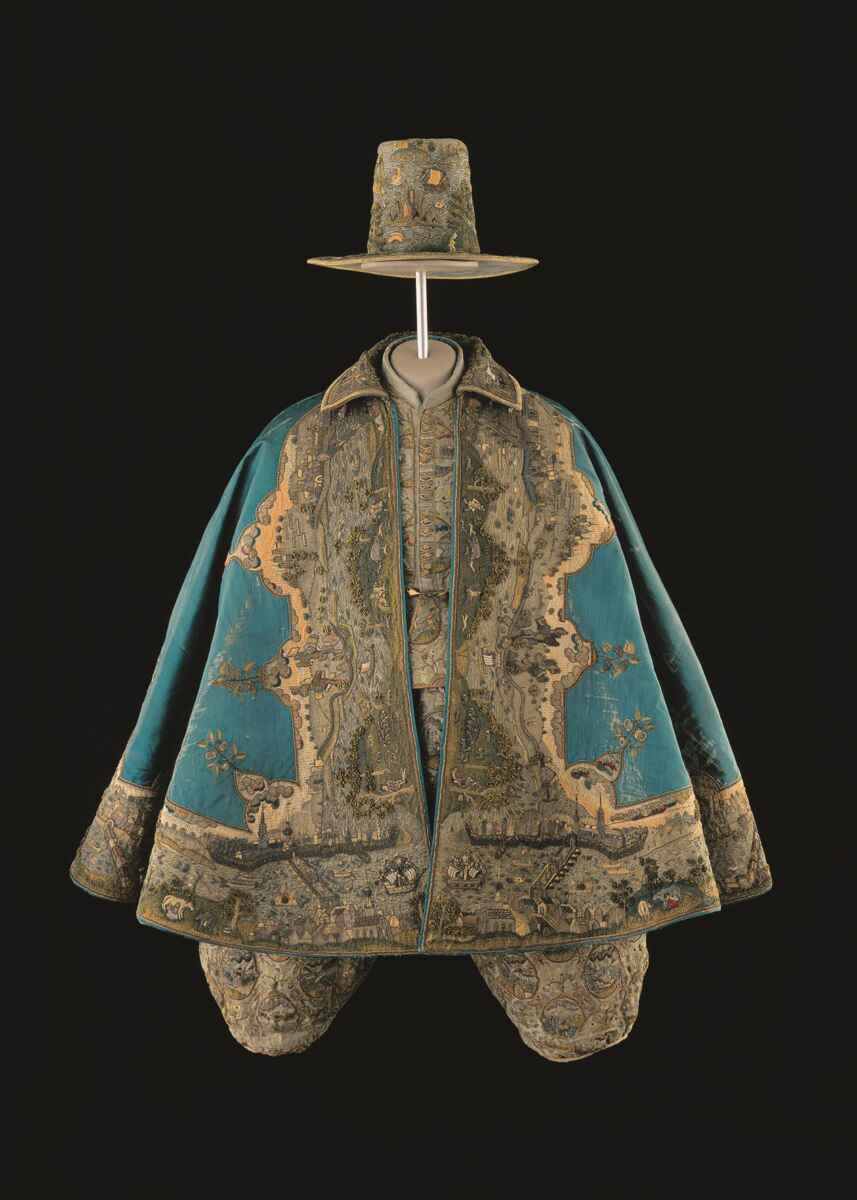
The Dresden Armoury (Rüstkammer) is one of the world’s foremost collections of historical arms and costumes. The Electoral Wardrobe (Kurfürstliche Garderobe) at the Armoury bears unrivalled testimony to the dynastic tradition of the Saxon ruling house. On display are Renaissance and Baroque weapons, sumptuous costumes and lavish accoutrements designed for banqueting and hunting, war and peace.
Along with the Münzkabinett, the Armoury is the oldest collection of the Staatliche Kunstsammlungen Dresden. Its origins date back to the reign of Duke Georg the Bearded (1471-1539), who made Dresden his main residence in the early 16th century. He established a Ducal Armour Chamber (Herzogliche Harnischkammer) in the palace. In 1567, Elector August (1526-1586) had the first complete inventory of the Arms and Armour Chamber (Rüst und Harnischkammer) drawn up. Starting in 1586, Elector Christian I (1560-1591) had the New Stable Building constructed to house the growing Electoral collection. This opulent complex accommodated 128 horses for the Elector’s personal use. The valuable holdings of the Rüstkammer were stored in numerous ‘chambers’ inside the building. No fewer than seven rooms were used to store clothing and props for courtly entertainments and tournaments. In 1711, August the Strong (1670-1773) ordered that the costumes worn by members of the ruling house, hitherto stored in the Electoral Court Tailors’ Workshop, should be incorporated into the collection.
When it was merged with the holdings from the dissolved Kunstkammer and transferred to the Zwinger in 1832, the collection was first displayed in museum form – under the name Royal Historical Museum (Königliches Historisches Museum). In the subsequent, years, it moved to various other places. The reconstruction of the Residenzschloss began in 1986. This enabled the museum to return to its place of origin.
At the Dresden Rüstkammer, one of the world’s most important collections of Renaissance and early Baroque costumes is on display. The richly illustrated exhibition guide, edited by Marius Winzeler, Staatliche Kunstsammlungen Dresden, contains contributions by Jutta Charlotte von Bloh, Christine Nagel, Viktoria Pisareva. It offers the presentation of all four rooms and its contents: Dresden Rüstkammer: The Electoral Wardrobe, Deutscher Kunstverlag, November 2023, 144 pages, sums up the history and covers all the costumes on display. Order the English edition (accept cookies; we receive a commission; price unchanged) from Amazon.de, Amazon.com, Amazon.co.uk.
Below three highlights from the Electoral Wardrobe presented at the Dresden Rüstkammer:

Parade dress of Elector Moritz of Saxony. Coat. Doublet, trunk hose and stockings in showcase 2c. 1545–1550. Outer fabrics: Italian; tailoring: Dresden, Ducal or Electoral Tailors’ Workshop (?). Yellow silk damask, black silk velvet, silver and gold trimmings. Circumference: 628 cm; sleeves: length 91 cm. Restored by the Abegg-Stiftung in Riggisberg, Switzerland as a donation. Rüstkammer, inv. no. i. 0001. Photograph copyright © Staatliche Kunstsammlungen Dresden, Rüstkammer. Photo by Christoph von Virág, Abegg-Stiftung in Riggisberg, Switzerland.
Parade dress of Elector Moritz of Saxony
This bright yellow parade dress with black velvet stripes on the voluminous coat is in keeping with Spanish and Italian princely fashion around the middle of the 17th c. It is among the items of clothing left by Elector Moritz of Saxony. Alongside other garments worn by Moritz, it is recorded in the clothing inventory drawn up in 1553.
The yellow silk of the yarns used in the fabrics was very probably dyed in the same silk manufactory. The same yellow sewing thread was used on all parts of the garment. The parade dress was specifically tailored for Moritz. Especially the tight-fitting doublet, the hip-hugging short trunk hose, and the skin-tight leather stockings convey a vivid impression of the stature and virility of the Saxon Elector, who was widely acclaimed for his boldness.
The short coat and the choice of bright colors, which here are to be understood as an exquisite fashion sensation and not as a reference to the colors of the Saxon ruling house, show their owner to have been fashion-conscious and keen to display his physical prowess. The coat was originally longer. Moritz had it specially shortened. The extra-long hanging sleeves are purely decorative in function. The arms were passed through armholes covered with a decorative flap. The broad upper arm puffs gave the impression of broad shoulders.
The coat is the principal element in the parade dress. It is made of silk damask with a pomegranate and pine cone pattern, which probably derives from the Florentine Peri and Perotti silk weaving workshops, the suppliers to the Medici, the Dukes of Florence. The design incorporates the Medici diamond ring with a crown and three pears. The addition of black velvet stripes with appliqué silver lacing along all the edges increased the value and magnificence of the coat. The slashes in the sleeves were held together by a total of 22 large gold passementerie knots, only one of which survives.
The parade dress of Elector Moritz of Saxony was restored at the Abegg-Stiftung from 2002 to 2008. When looking at portraits of Moritz’s great contemporaries, it is evident that this coat was at the cutting edge of princely fashion and has to be seen in the context of European dynastic and political interconnections.

Parade dress of Electress Magdalena Sibylla of Saxony. Bodice and skirt c. 1610 – 1620, outer fabrics: Italian; tailoring: Dresden, Electoral Tailors’ Workshop; bobbin lace and trimmings: Saxon Golden yellow and safflower red silk satin; gold embroidery; gold and silver trimmings; gold and silver lace; sequins, taffeta ribbons, silk pompoms; fishbone rods Rüstkammer, inv. no. i. 0045 © Staatliche Kunstsammlungen Dresden, Rüstkammer, Foto / Photo: Jürgen Lösel.
Parade dress of Electress Magdalena Sibylla of Saxony
This golden yellow and safflower red dress with gold and silver lace follows the style, the nuanced colors, and the sophisticated ornamental details of Italian ladies’ fashion in the period around 1590 – 1620. It combines French, Italian and Spanish fashion elements. The narrow waisted pointed bodice has a low neckline and is decorated with densely packed narrow rows of gold and silver lace.
The skirt is attached to the bodice by numerous gold and silver passementerie buttons. The somewhat stiffened bodice is an early form of the so called Schneppentaille (a tight bodice with a tapering extension at the front), which was to dominate ladies’ fashion until the middle of 17th century.
The skirt – an overskirt – is open at the front and decorated with gold and silver lace running in several bands of various width, into which drop-shaped silver sequins are worked.
Originally, a second sumptuous skirt (which has not survived) worn underneath would have been visible through the front slit and the long slashes in the overskirt held together with ribbon roses.
The graceful starlike shoulder ornaments are borrowed from the bridal and festive dresses of the Venetian aristocracy. The pointed tips are decorated with bright red silk pompoms. The tight fitting safflower red sleeves are fastened with buttons at the wrist. They are embroidered all over with fish scales and stars. The detachable golden-yellow wing sleeves on top are decorated with lace and small trimmings of gold and silver threads. Accessories worn with the dress would probably have been a highstanding collar of fine white lace, lace cuffs of the same type, set off with precious gold and pearl jewellery.
The queens and princesses of the English and Danish royal families, Maria de’ Medici, Duchess of Florence and Queen of France, were pioneers of the fashion represented by this dress. No other surviving original pieces have survived in such splendid quality, completeness and excellent state of preservation.

Landscape dress of Elector Johann Georg I of Saxony. Cloak Doublet, breeches, hat, belt and sword hanger in showcase 32. 1611, fabric and embroidery yarns: Italian; tailoring: Dresden, Electoral Tailors’ Workshop; Embroidery: Hans Erich Friese, Dresden; trimmings: probably Saxon Knee-length circular cloak with small flat collar and broad border in pictorial embroidery; silk satin in “sea-green” (bluish green), green.
Landscape dress of Elector Johann Georg I of Saxony
This lavish dress featuring landscapes, wildernesses, shipping, farming, people and animals embroidered onto it was a Christmas gift from the Dowager Electress Sophia to her son Elector Johann Georg I in 1611, the year of his accession following the sudden death of his brother Christian II. The depiction of the Elbe Valley, with Dresden and Meissen, was intended to show the proud legacy that the new ruler was obliged to protect and enhance.
With this cloak around his shoulders, the ruler symbolically stood at the center of his territory, looking down on it, just as the tower of the Palace commands an all-round view of the electoral capital.
The exhibiton guide edited by Marius Winzeler, Staatliche Kunstsammlungen Dresden, with contributions by Jutta Charlotte von Bloh, Christine Nagel, Viktoria Pisareva: Dresden Rüstkammer: The Electoral Wardrobe, Deutscher Kunstverlag, November 2023, 144 pages, sums up the history and covers all the costumes on display. Order the English edition (accept cookies; we receive a commission; price unchanged) from Amazon.de, Amazon.com, Amazon.co.uk.
The front cover of the book shwos the parade dress of Electress Magdalena Sibylla of Saxony, c. 1610 – 1620, Rüstkammer, inv. no. i. 0045. © Staatliche Kunstsammlungen Dresden, Rüstkammer, Foto / Photo: Jürgen Karpinski

For a better reading, quotations and partial quotations in this exhibition guide review of the Armoury/Armory Dresden Rüstkammer. The Electoral Wardrobe have not been put between quotation marks.
Book / Exhibition guide review of the Armoury/Armory Dresden Rüstkammer. The Electoral Wardrobe added on August 9, 2024 at 16:51 German time. Details added on August 11, 2024 at 05:14 German time.